As part of its strategic vision to improve the lives of children in the second decade of life, UNICEF sought to develop a package of guidance, tools and supplies to support country programmes in its efforts to reach and engage adolescents ages 10-18yrs affected by conflict and other crises. In my role as lead designer, I was tasked with taking what was at the time a 300 page document, and turning into a physical kit that would best facilitate UNICEF’s efforts.
The Adolescent Kit for Expression and Innovation is the first UNICEF kit to use 'design thinking' and 'human centered design' (HCD) methods in its creation. Over the course of two years - and several countries including South Sudan, Indonesia, Jordan, Palestine, Kosovo, Bhutan and Myanmar - I worked with UNICEF staff and implementing partners to discover and understand the needs, desires and behaviours of adolescents and facilitators in low-resource and humanitarian-action environments. These learnings - combined with research into materials and design innovations - guided me in generating a number of concepts focused on functionality and the user-experience. Functional prototypes were evaluated in the field for characteristics such as portability, durability and multi-functionality. Results from the field were incorporated into the final design of the kit. The Adolescent Kit is currently in use in 21 countries around the globe. Visit www.adolescentkit.org.
Key Design Features
Portability:
During humanitarian crisis, adolescents are often required to work, assume family responsibilities, or are simply unable to reach traditional community centres due to safety concerns or a disability. The Adolescent Kit addresses this reality by providing facilitators with a truly portable kit. Made from durable and recyclable corrugated plastic, facilitators are able to outreach and engage adolescents wherever they gather.
Features:
+ constructed with recyclable corrugated plastic (coroplast)
+ lightweight, durable
+ water-resistant
+ available in gender-friendly carrying configurations
Multifunctionality:
Observations in low-resource environments revealed activities as simple as drawing, are challenging without a dry solid surface. Effective and efficient facilitation is also difficult in time-constrained environments without adequate instructional tools that are easy to access. In keeping with the design philosophy of doing more with less, I designed components capable of meeting multiple needs.
Highlights:
+ Carrying cases convert to portable whiteboards/flip charts and can be hung in indoor and outdoor environments.
+ Supply pods can be used as individual writing surfaces.
+ Carrying cases can be used as solid writing surfaces for group activities.
+ Facilitator Tablets function as an organizational tool, writing surface and instructional aid.
Designed for local procurement:
In response to humanitarian crisis, UNICEF’s Supply Division incorporates a coordinated process to procure and globally distribute supplies. Distribution of supplies can take between 3-6 months to reach a port of entry and tend to be designed in a one size fits all format. The Adolescent Kit is the first kit designed to leverage local procurement in an effort to reduce the time to the field. In keeping with other toolkits, the Adolescent Kit is available globally through UNICEF’s supply catalogue.
In an effort to promote the customization of locally relevant kits, UNICEF country offices and partners can quickly produce their own versions of the kit by using design templates and source files available via the UNICEF website.
Cross-sectoral Collaboration:
The Adolescent Kit was truly a cross-sectoral design effort. UNICEF experts from Child Protection, Education, Adolescent Development and Participation, Disability and Gender sections - in collaboration with the field - provided input and guidance throughout the design process. In addition, the expertise of the Office of Innovation as well as Supply Division was tapped to ensure the effectiveness of the kit in the field.
Links:

Early conceptual thinking.

Quick concepts sketches done in the field.
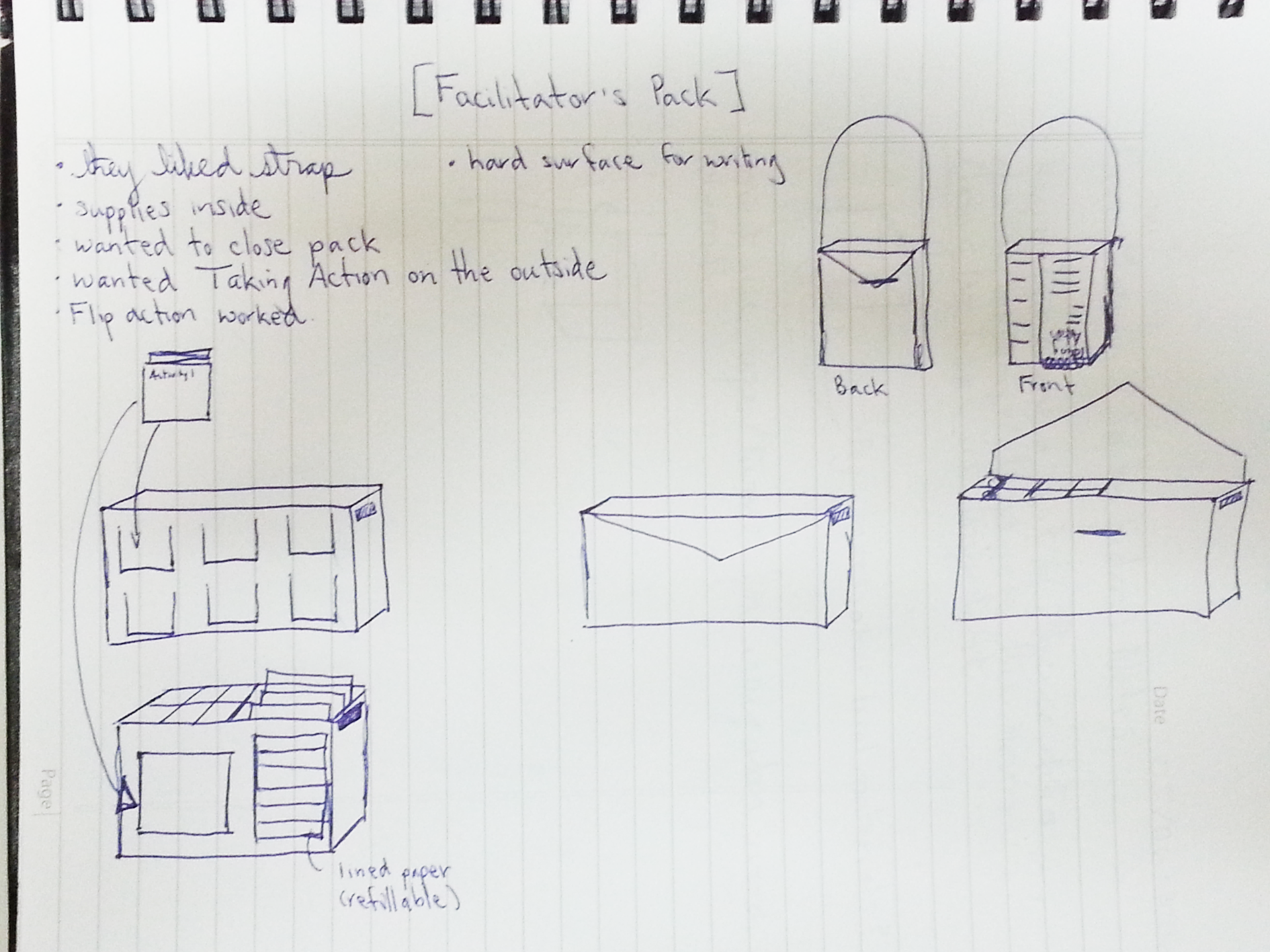
Quick concepts sketches done in the field.
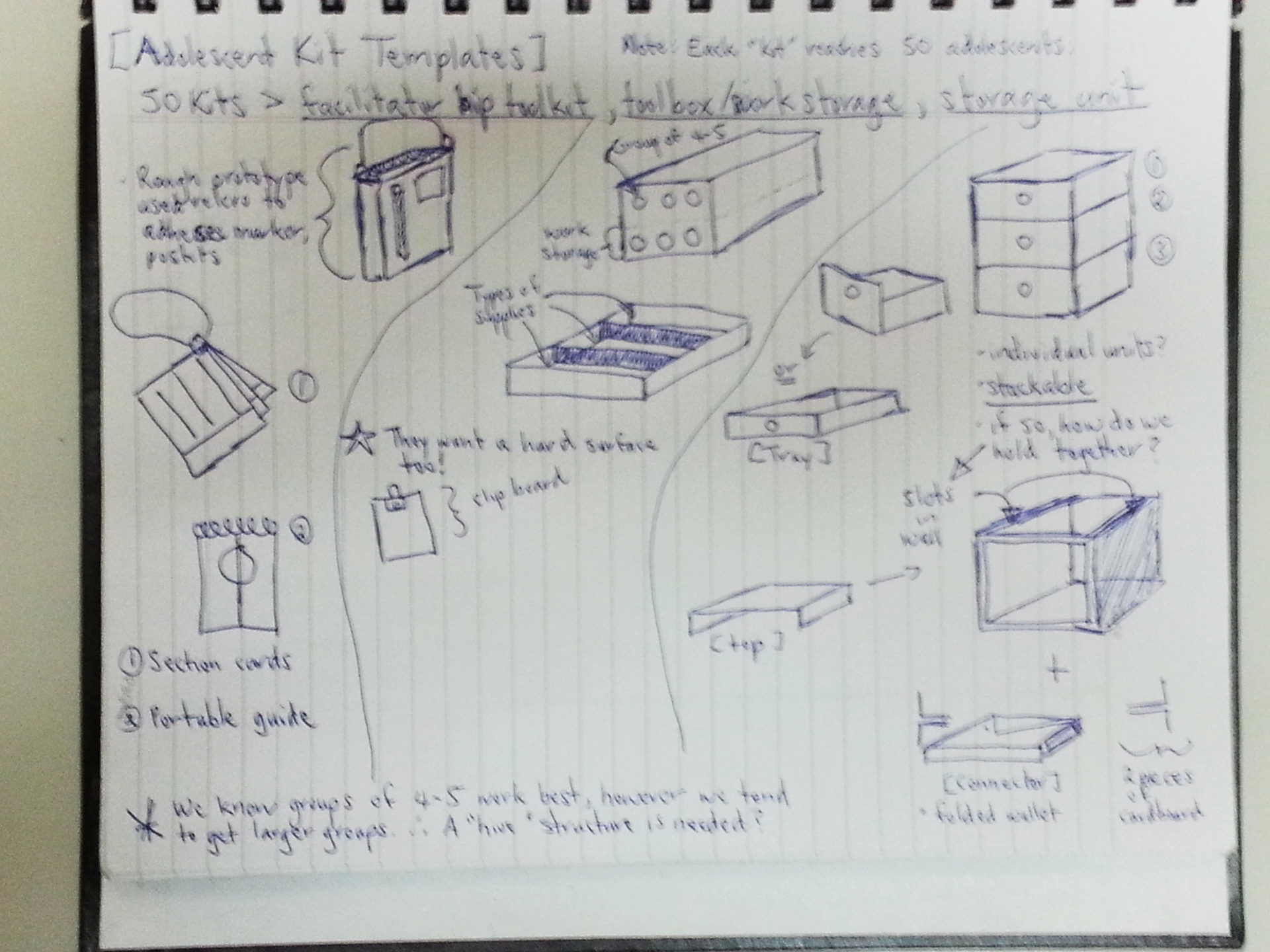
Quick concepts sketches done in the field.
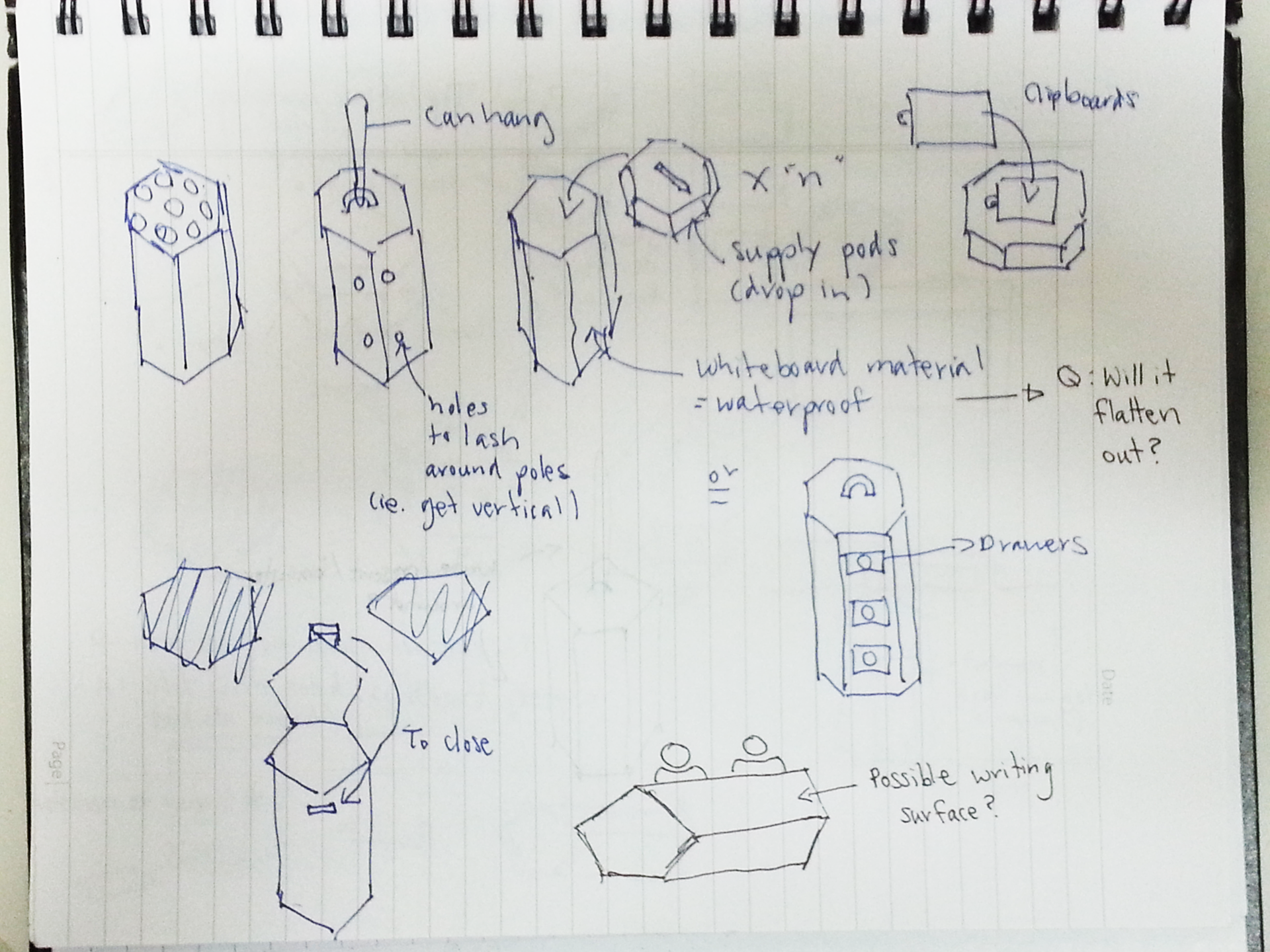
Quick concepts sketches done in the field.
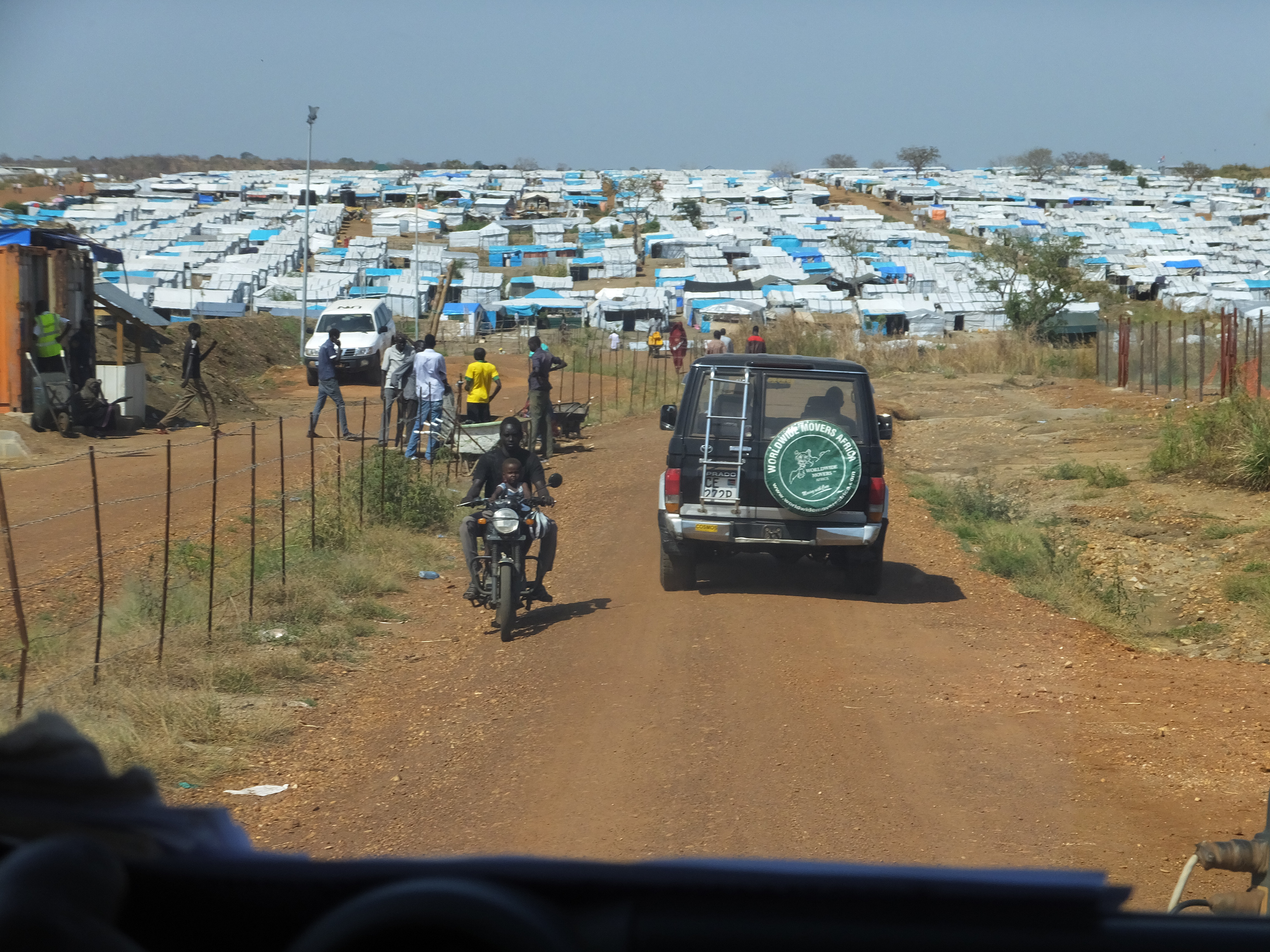
Entering the IDP camp in South Sudan.
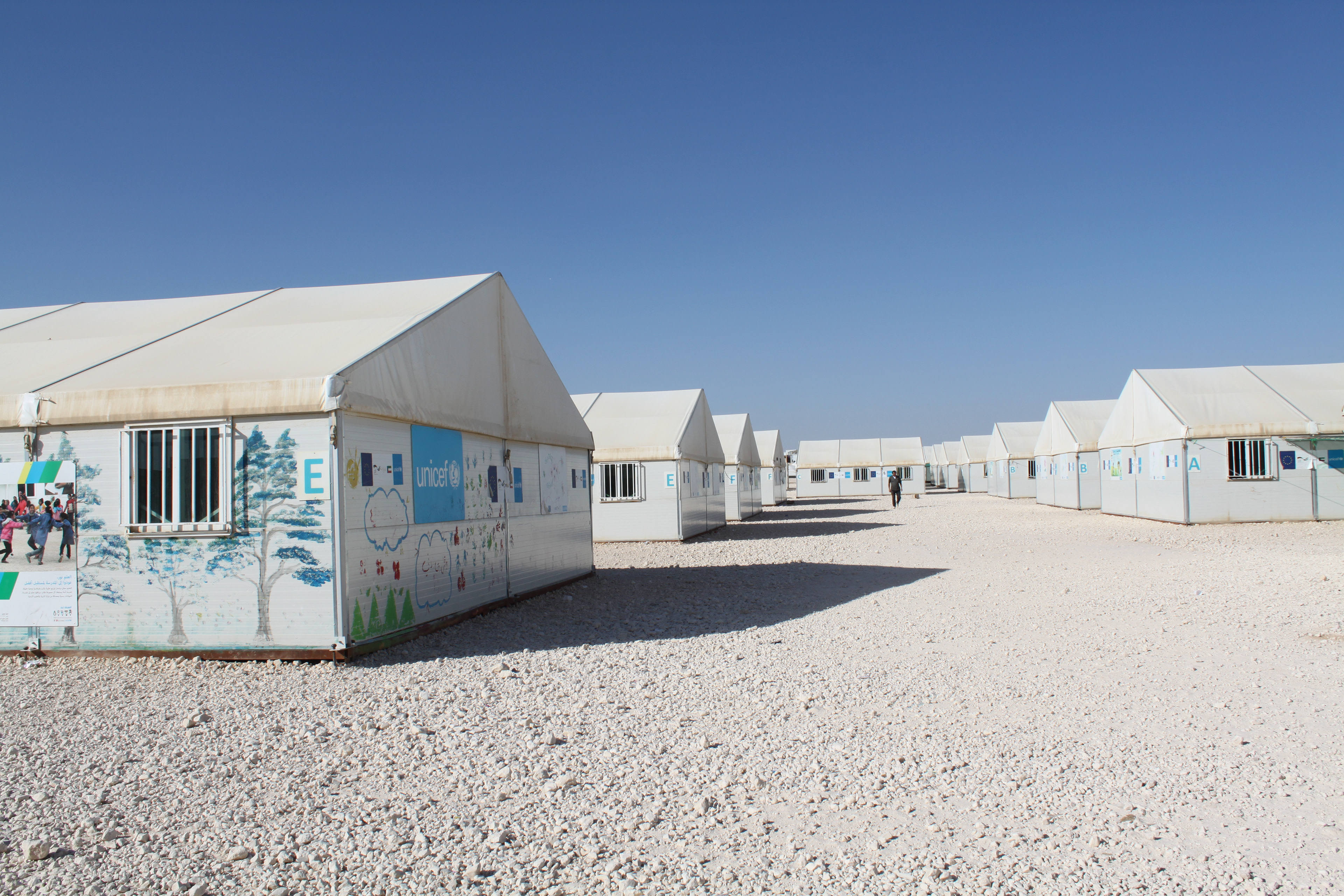
User-testing in Zaatari camp, Jordan.

Design research board at HQ.
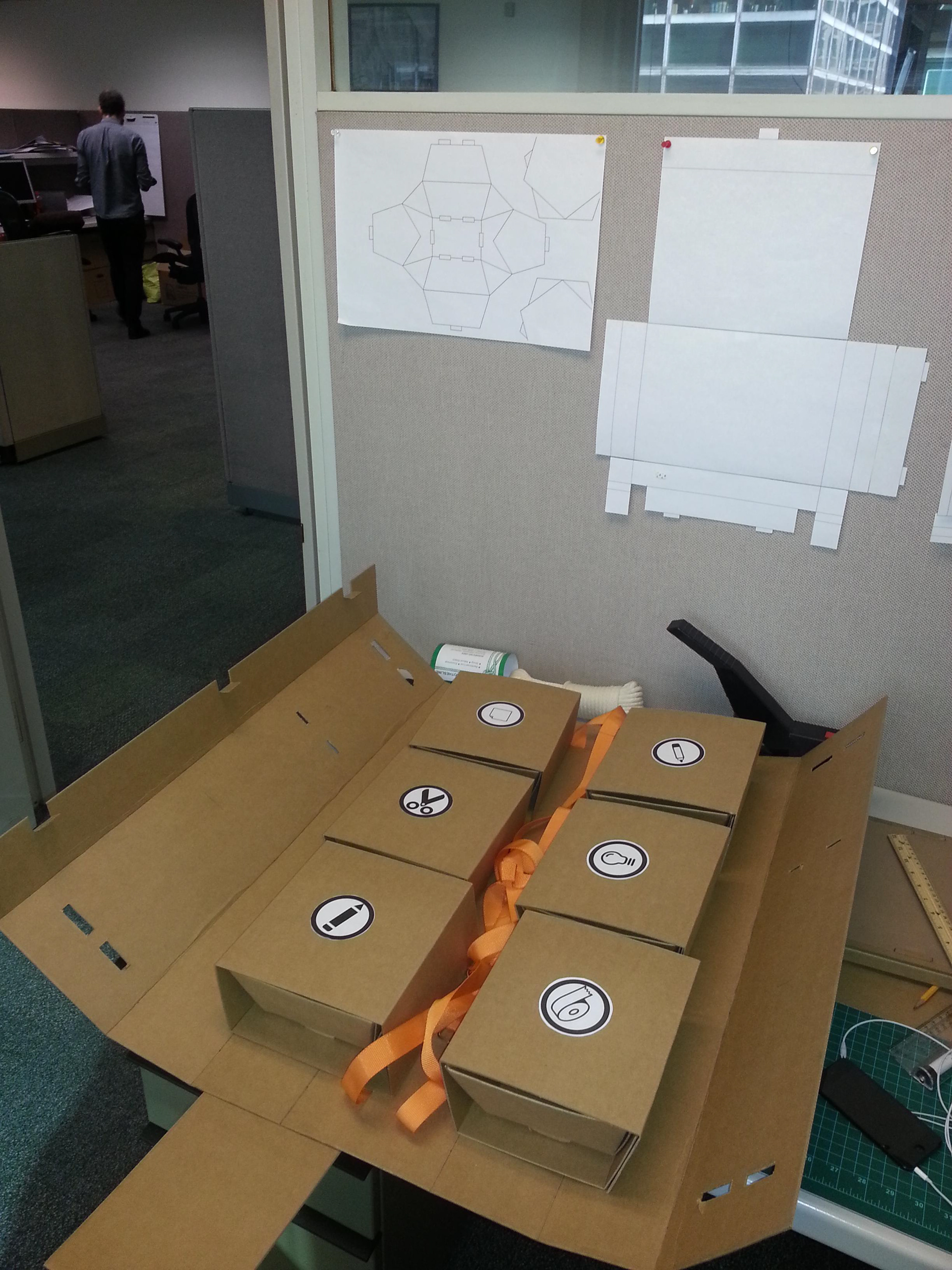
Early carrying case prototype.
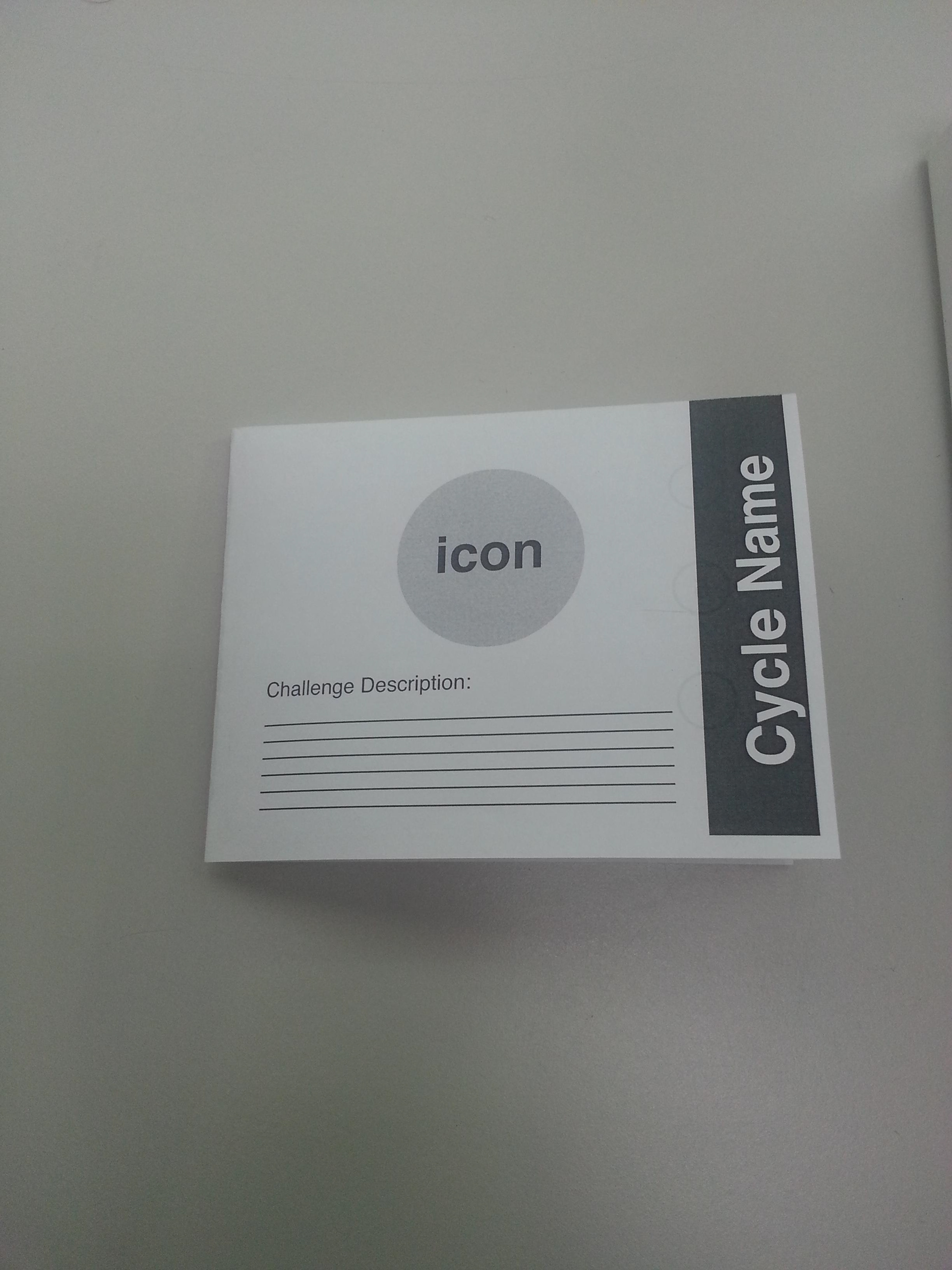
Graphic design wireframe.

Insight from the field led to subtle design features. Activity Guides can be unfolded and attached to the Facilitators carrying case.
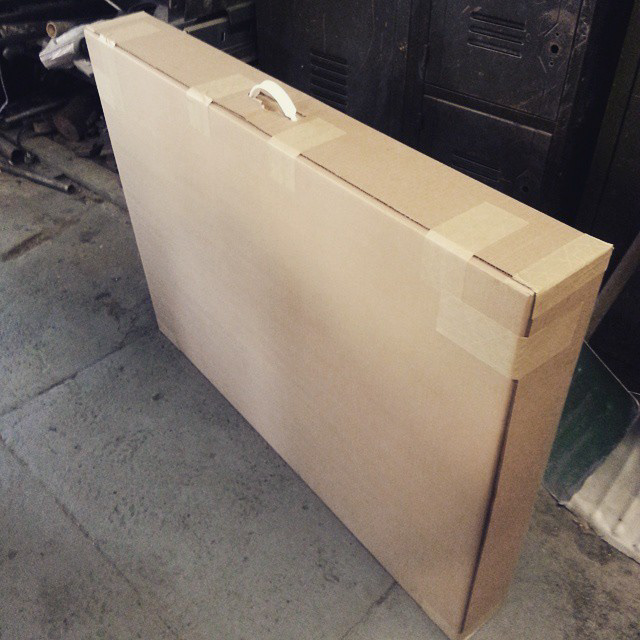
Adolescent kits designed to ship flat to reduce shipping costs.
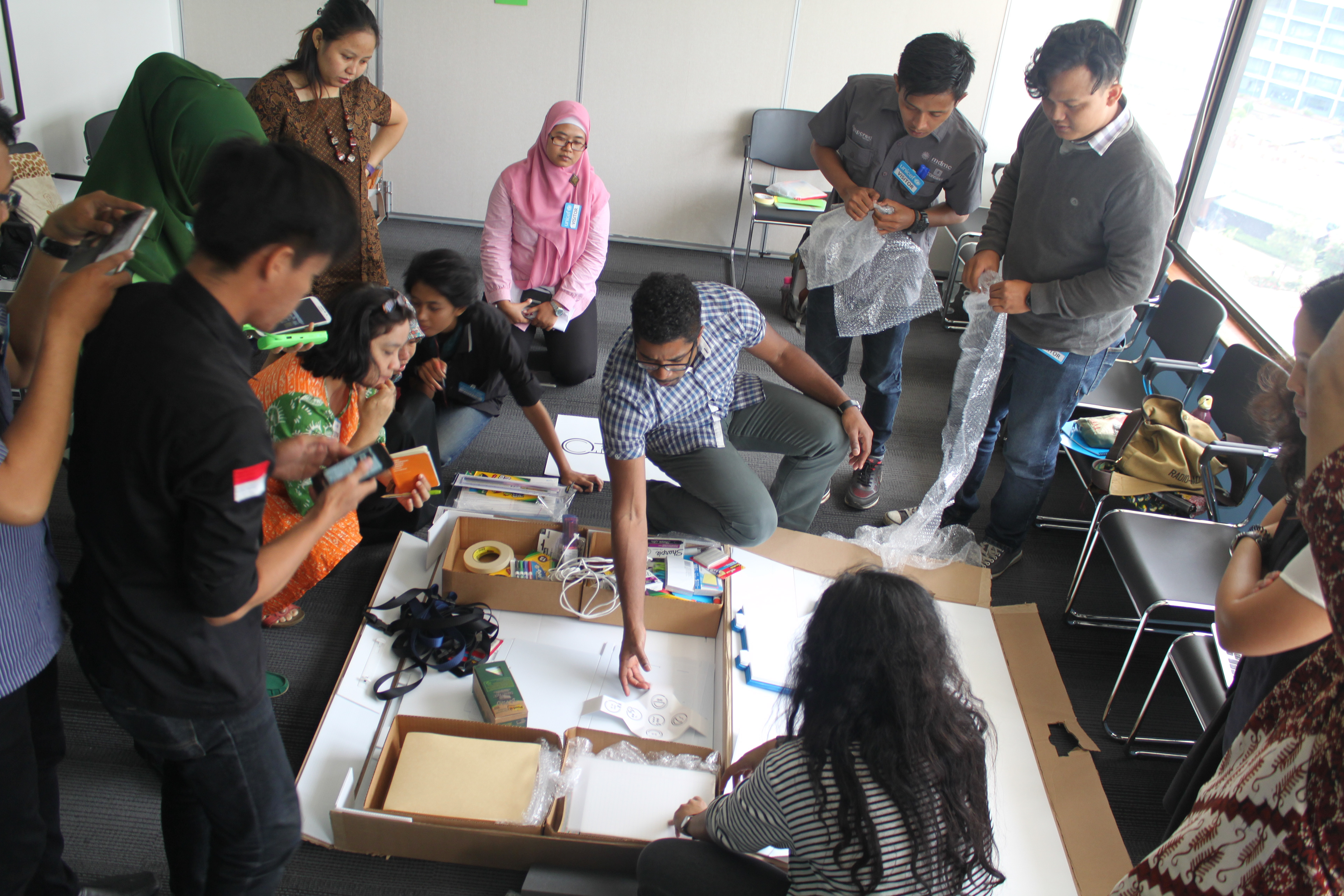
Introducing Indonesian facilitators to the advanced kit prototype.
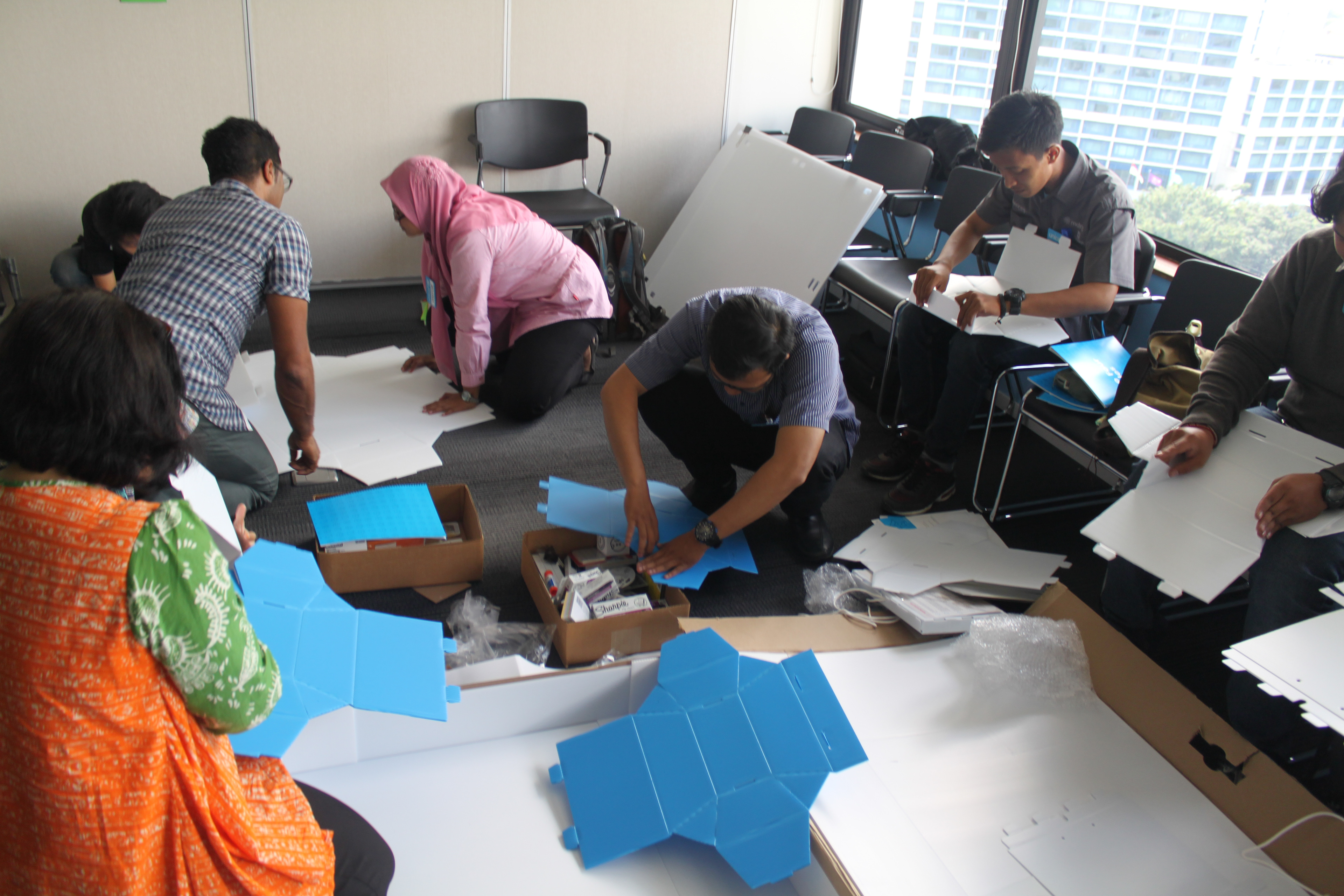
Indonesian facilitators assembling prototypes for testing in the field.
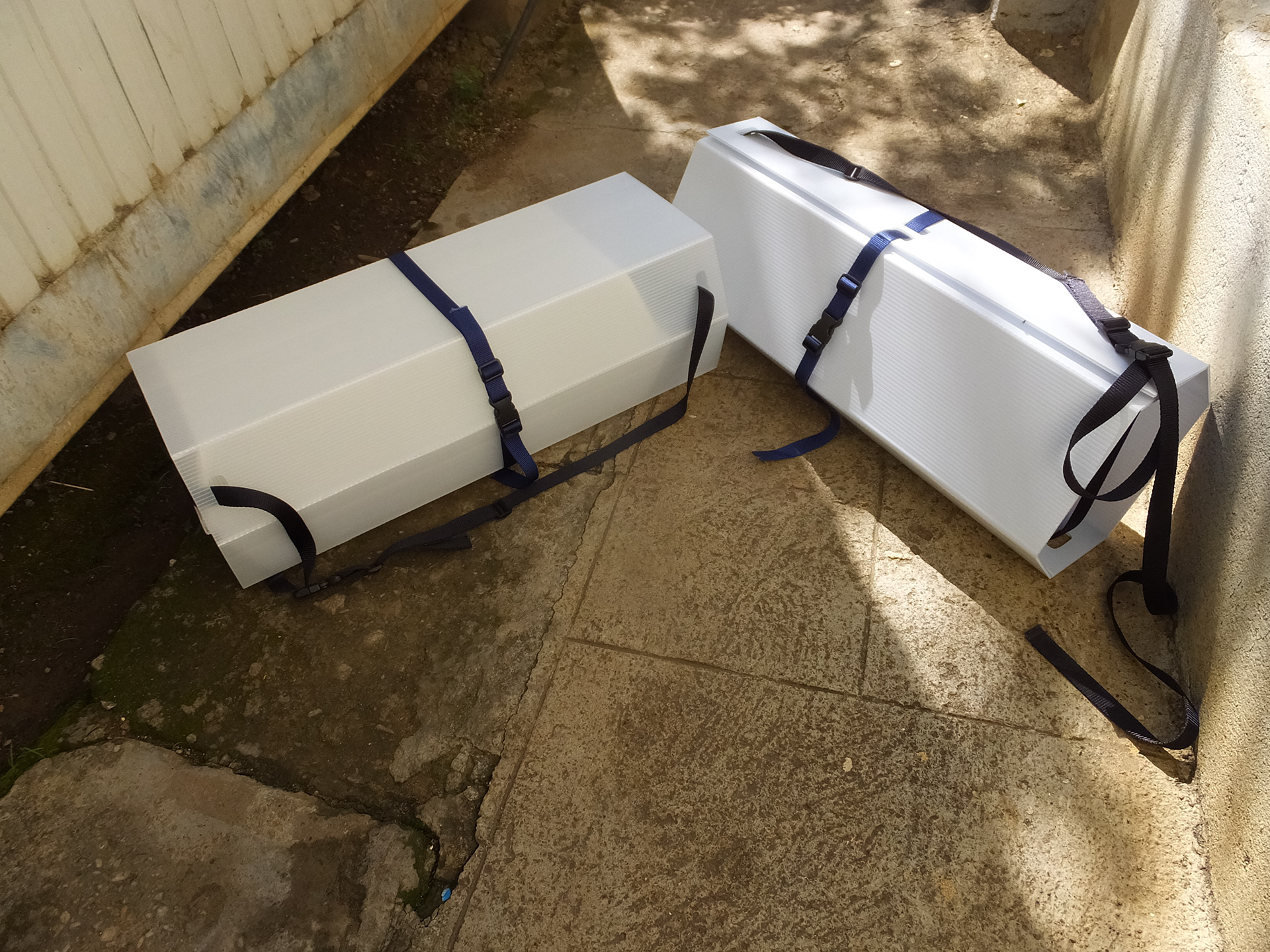
Prototype kits at South Sudan country office.

Carrying case as portable whiteboard in South Sudan.

User-testing in Bor, South Sudan.
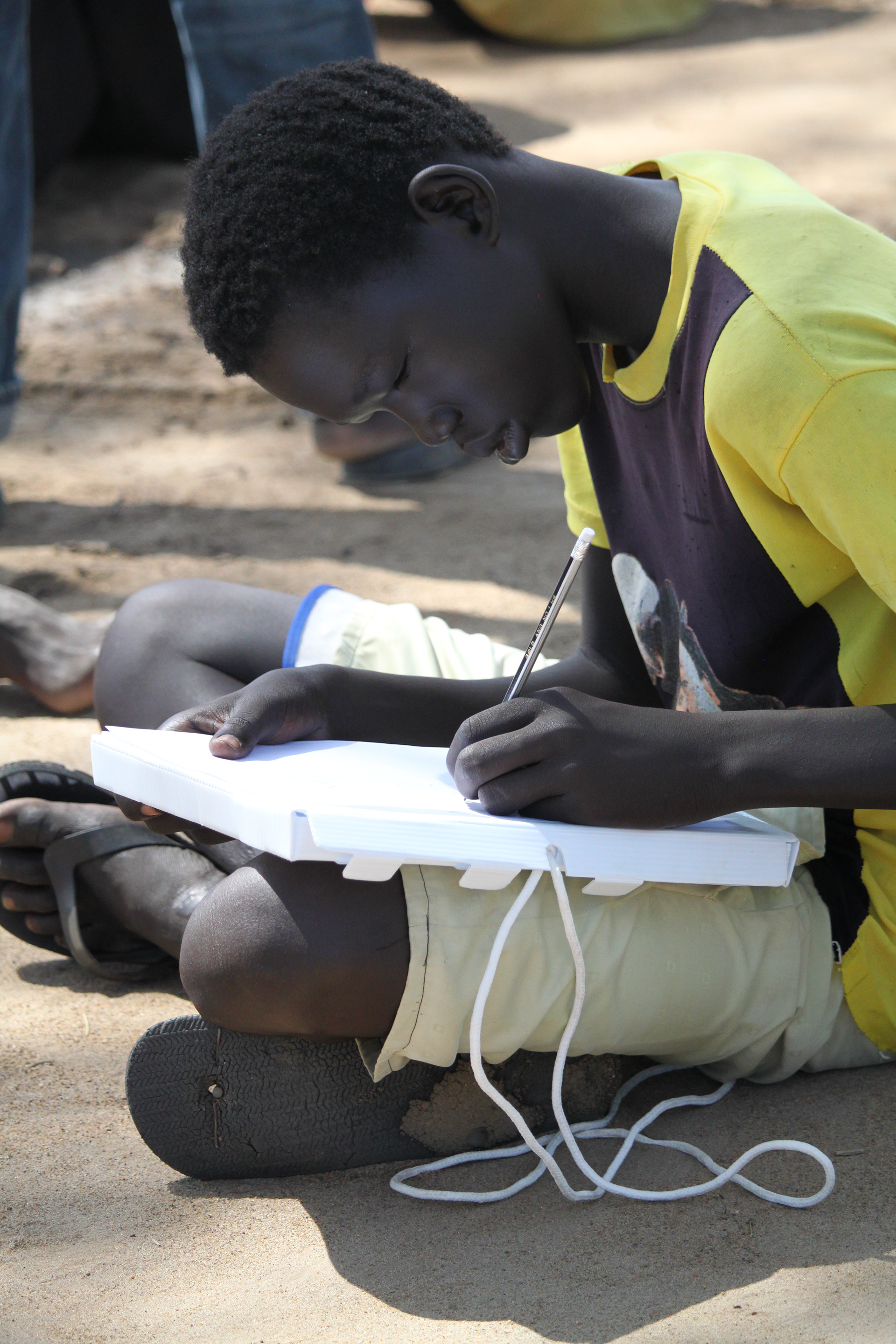
Young South Sudanese boy working on idea.
